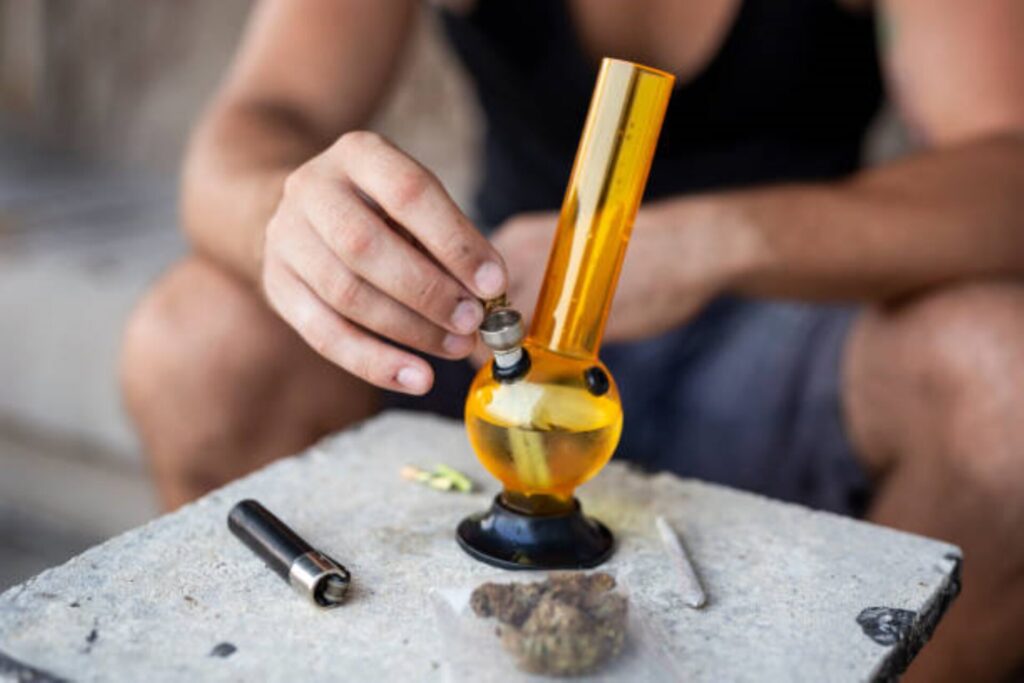Since the Cannabis Act was enacted in 2018, Canada has undergone a remarkable shift in cannabis use dynamics. Legalization has not only unlocked new opportunities for recreational use but has also catalyzed the growth of a thriving legal cannabis industry. At Pure Blue Cannabis, we acknowledge the critical importance of staying updated on the ever-changing cannabis landscape.
Our commitment to providing high quality cannabis products is matched by our dedication to educating consumers about responsible use. We believe that informed consumers can make better choices, leading to a safer and more enjoyable cannabis experience. As the cannabis industry continues to evolve, it is crucial to address the challenges and opportunities that arise.
This includes ensuring that regulations keep pace with industry developments, promoting sustainable cultivation practices, and supporting social equity programs to address the historical injustices associated with cannabis prohibition. By navigating these complexities, Canada can continue to lead the way in the global cannabis industry, setting a benchmark for responsible legalization and regulation.
Key takeaways
- Cannabis usage in Canada is increasing, particularly among youth aged 16-19, with significant rising rates reported in various age groups and preferences for different product types.
- The Cannabis Act provides a legal framework for cannabis regulation, aiming to minimize public health risks, enforce age restrictions, and improve safety through quality control.
- Post-legalization, there has been a notable decline in cannabis-related offences, contributing to the reduction of organized crime and the development of social equity programs to support marginalized communities.
Current cannabis usage trends in Canada
The trend of cannabis use in Canada has been on an upward trajectory, particularly among younger demographics. In 2023, the rate of cannabis use among youth aged 16-19 rose to 43%, marking a significant increase from previous years. Approximately 20% of Canadian youth aged 15 to 24 reported using cannabis in the past year. This increase is also evident among young adults; over one-third of Canadian adults aged 18 to 24 reported cannabis use in the past year, reflecting a rate of approximately 38.4%.
Age group preferences
Cannabis use varies significantly across different age groups. In the 2023 National Cannabis Survey, it was found that young adults aged 18-24 and adults aged 25 and older were the primary users of cannabis. Over one-third of younger adults aged 18 to 44 years reported using cannabis in the past 12 months.
Additionally, daily or almost daily cannabis use was reported by approximately 8.7% of young adults aged 18-24, highlighting a trend towards more regular use among this age group.
Gender differences in cannabis use
Gender differences in cannabis consumption have become more pronounced with cannabis legalization. Among women aged 25 and older who consume cannabis, 62.7% prefer edible products, indicating a significant preference for edibles compared to other product types.
Gender-specific preferences play a significant role in cannabis consumption patterns.
Popular cannabis products
The diversity of cannabis products available to consumers has expanded significantly since legalization. The major categories include dried flower, edibles, extracts, and topicals. Among these, smoking remains the most prevalent method of consumption at 63%, followed by edibles at 52%. Inhaled cannabis delivers effects within minutes, while ingesting cannabis takes 30 minutes to two hours for effects to manifest.
Dried cannabis
Dried cannabis and fresh cannabis continue to be a top choice for consumers due to its versatility and traditional consumption methods. It remains popular because of its established presence in the market and the familiarity of traditional methods such as joints and pipes. At Pure Blue Cannabis, we provide a wide range of dried and fresh cannabis products to cater to diverse consumer preferences.
Our selection includes various strains that offer different levels of potency and effects, making it easier for consumers to find the perfect match for their needs. Whether you are seeking relaxation, creativity, or relief from stress, our dried and fresh cannabis products are curated to enhance your experience.
Additionally, we prioritize quality and safety, ensuring that all our products meet stringent standards set by Health Canada. This commitment to excellence not only guarantees a superior product but also reinforces consumer trust in the legal cannabis market.
Cannabis edibles
Cannabis edibles have seen a rise in popularity as more consumers seek alternative methods to ingest cannabis. Common forms of edibles include tea, drinks, candies, cookies, and brownies. The convenience of edibles is a significant factor, with 16.9% of consumers citing it as a reason for purchasing legal cannabis.
Vaping cannabis and extracts
Vaping cannabis and using cannabis extracts are becoming increasingly popular due to their perceived health benefits compared to smoking. Cannabis extracts, which often contain higher concentrations of THC, provide potent options for consumers, including cannabis oil.
The increasing preference for vaping and extracts indicates a shift towards methods perceived as healthier alternatives to traditional smoking.

Legal framework and regulations
The Cannabis Act, passed by the Canadian Parliament in June 2018 and effective from October 17, 2018, provides a comprehensive legal framework for the regulation of cannabis production, distribution, sale, and possession. The Act seeks to minimize health risks by providing regulated access and establishing strict safety and quality regulations to protect public health. In Canada, the regulation of cannabis is overseen by multiple levels of government. This includes federal, provincial, and territorial authorities.
Each province and territory is tasked with developing and enforcing distribution and sale systems for cannabis. This decentralized approach allows for tailored regulations that meet the specific needs and circumstances of different regions.
The Cannabis Act overview
The Cannabis Act helps Canadians who consume cannabis by keeping them out of the criminal justice system. It also establishes a framework to minimize health risks through regulated access and strict safety and quality regulations.
The Act provides a balanced approach to cannabis legalization, focusing on public health and safety.
Possession limits and age restrictions
The Cannabis Act includes specific measures such as age restrictions and promotion restrictions to limit youth access to cannabis. Individuals are allowed to possess up to 30 grams of cannabis in public. The minimum legal age for cannabis use is set at 18 years, though some provinces have established a higher age limit.
Selling cannabis to minors can result in severe penalties, with sentences reaching up to 14 years of imprisonment. Such measures protect young people from the potential harms of cannabis use.
Medical cannabis regulations
Medical cannabis regulations in Canada require approval from a licensed healthcare provider for access. Healthcare provider authorization ensures appropriate and safe use of medical cannabis. These regulations provide eligible patients with access to medical cannabis while maintaining strict oversight and control.
Public health and safety
Public health and safety are critical areas of focus in the context of cannabis use post-legalization. The legalization of cannabis has led to a notable reduction in cannabis-related arrests and prosecutions, indicating a shift in societal and legal perspectives on cannabis use. Federal and provincial governments prioritize public health through various measures, including stringent quality control protocols and public education campaigns.
Health Canada ensures cannabis products meet safety standards, protecting consumers and maintaining trust in the legal market.
Quality control and product safety
Stringent quality assurance protocols ensure consumer safety in cannabis products. Health Canada mandates rigorous quality control procedures to test for safety and contaminants, ensuring that only safe products reach consumers. Such measures are essential for maintaining trust in legal cannabis products and protecting public health.
Economic impact of cannabis legalization
The legalization of cannabis has significantly contributed to economic growth in Canada. Total cannabis sales exceeded CA$5 billion in 2023, reflecting robust market demand and consumer acceptance. The cannabis industry has also created thousands of jobs across various sectors, bolstering the economy.
Moreover, the number of individuals reporting a legal source for cannabis has increased to 73% in 2023, highlighting a shift from illegal sources and further stabilizing the market.
Reducing criminal activity
The Cannabis Act aims to deter criminal behavior by implementing strict penalties for illegal cannabis activities. Since legalization, the number of cannabis-related offences has dropped significantly, reflecting the effectiveness of regulated access and enforcement.
Regulating cannabis sales and distribution according to provincial laws has further reduced illegal activities and the influence of organized crime in the cannabis market.
Decrease in cannabis-related offences
Cannabis-related offences reported by police represented just 19% of all drug offences in 2020, a significant drop from over two-thirds before legalization. From 2017 to 2020, the number of adults charged with cannabis-related offences plummeted by 85%, with only 2,550 adults charged in 2020.
Youth charges for cannabis-related offences also fell by 87%, with only 249 youths charged in 2020 compared to 1,858 in 2017.
Targeting organized crime
The government has implemented regulations to restrict illegal sales, aiming to diminish organized crime’s influence in the cannabis market. Legalization efforts include tracking and regulating cannabis supply chains to prevent organized crime involvement.
Such measures ensure the cannabis market remains safe and regulated, free from criminal influence.
Environmental and social considerations
The cultivation of the cannabis plant can have significant environmental impacts, necessitating a focus on sustainable practices. Sustainable cannabis cultivation practices include using organic farming techniques, reducing water usage, and minimizing the carbon footprint associated with production.
Addressing environmental and social considerations in cannabis production promotes resource efficiency and fair access within the industry.

Legal cannabis use among youth
Youth cannabis use remains a critical issue in Canada, with rates significantly higher than those of adults.
Common reasons for cannabis use among young people include:
- Social factors.
- Coping with stress.
- Aids for sleep.
- Appetite stimulation.
The legalization of cannabis aimed to diminish youth access to cannabis and reduce the appeal of the illegal drug trade.
Public outreach efforts have emphasized the dangers of cannabis use, especially targeting young audiences. These efforts include educational strategies stressing the importance of understanding cannabis effects and responsible usage.
Age restrictions and enforcement
The Cannabis Act includes specific measures such as age restrictions and promotion restrictions to limit youth access to cannabis. These regulations protect young people from the potentially harmful effects of cannabis, which can be more pronounced in developing brains. Strict enforcement of minimum age requirements keeps cannabis out of the hands of youth.

Summary
Since the legalization of cannabis, Canada’s landscape has seen remarkable changes, with distinct trends in usage across different demographics and a diverse array of products becoming popular. The Cannabis Act has established a robust legal framework with stringent regulations to ensure public health and safety while also delivering economic benefits and reducing criminal activities.
At Pure Blue Cannabis, we recognize the importance of understanding these developments to better serve our customers and promote a responsible cannabis culture. As cannabis use becomes more accepted and normalized, a wider range of consumers are exploring its potential benefits, whether for recreational or medicinal purposes.
Contact us today to explore our extensive range of premium cannabis products designed to meet your preferences and needs. Our knowledgeable staff is ready to assist you in making informed decisions about cannabis consumption. By staying informed and choosing products from a legal source like Pure Blue Cannabis, you contribute to the responsible growth of the cannabis industry in Canada.
Frequently asked questions
What are the most popular cannabis products in Canada?
Dried flower and edibles are the most popular cannabis products in Canada, with smoking and consumption of edibles being the most common methods of use.
What does the Cannabis Act regulate?
The Cannabis Act regulates the production, distribution, sale, and possession of cannabis to minimize health risks by ensuring regulated access and enforcing strict safety and quality standards.

